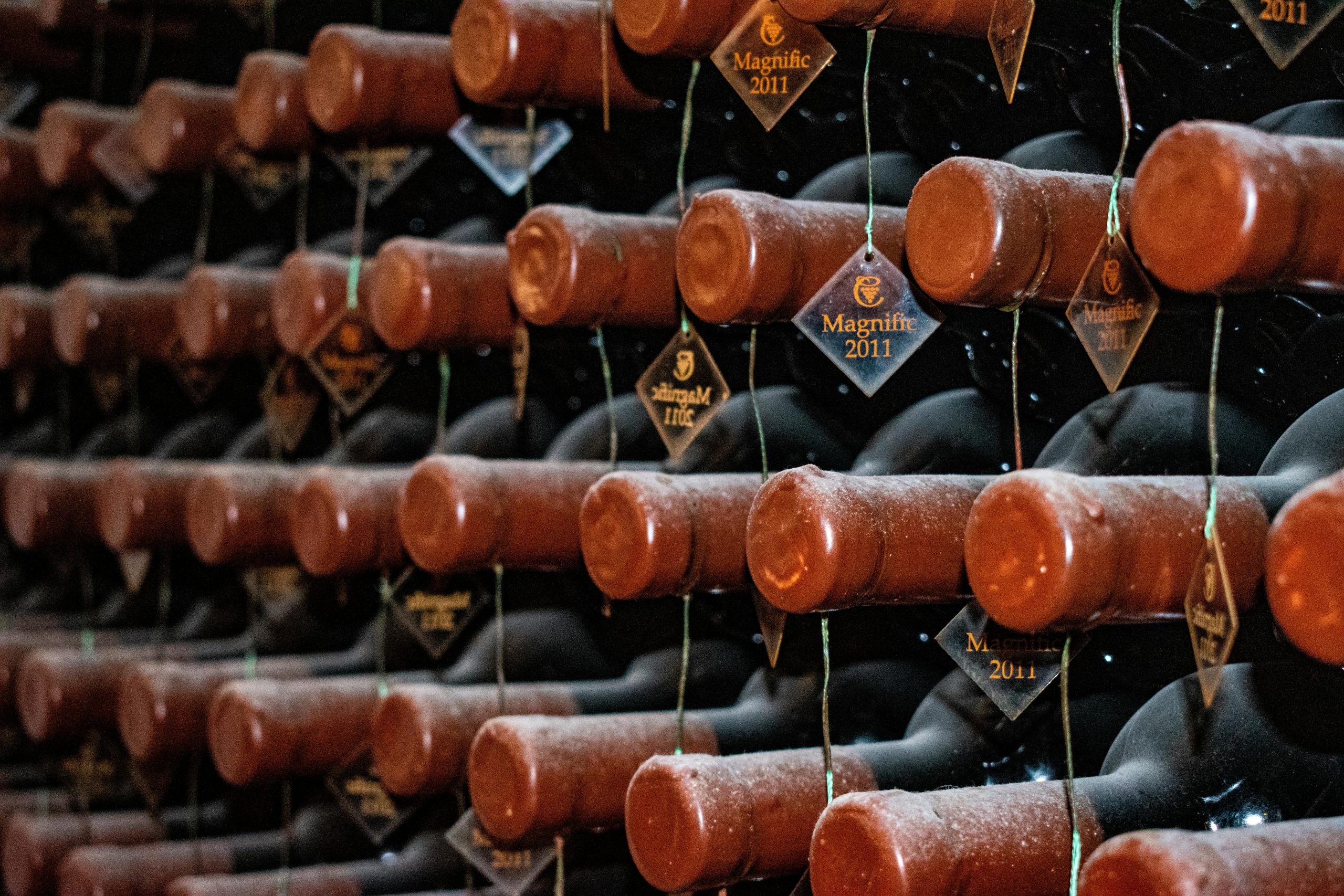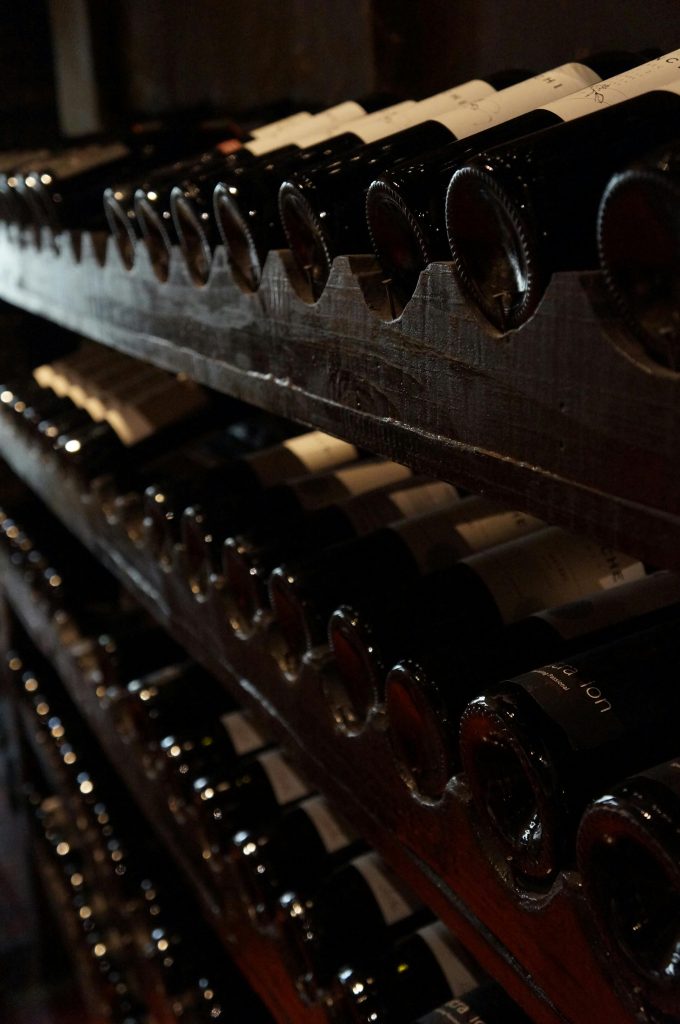
Storing wine at home is simple when you follow one golden rule: keep it cool, dark, and stable. Whether you’re preserving a rare vintage or just your Tuesday night favorite, the way you store your wine affects its taste and longevity.
To store wine at home, keep it cool (45–65°F or 7–18°C), dark, and stable. Lay bottles with corks horizontally to keep the cork moist, avoid vibrations, and maintain humidity around 50–70%. A wine fridge is ideal, but a cool, dark closet works too. For open bottles, seal tightly and refrigerate.
Let’s look deeper into this complex subject and make you a wine storage pro.
1. Temperature: The Key to Longevity
Wine thrives in cool temperatures. Ideally, you want it between 45°F and 65°F (7°C to 18°C). For long-term storage, aim for the sweet spot at 55°F (13°C).
Why does temperature matter? If it’s too hot, wine can age prematurely. Too cold, and you risk freezing the liquid, causing the cork to pop out. Both extremes can damage your wine.
Tips:
- Avoid storing wine in your kitchen or near appliances. Heat and fluctuating temperatures are the enemies.
- If you don’t have a wine fridge, find a naturally cool spot in your home, like a basement or a closet.
2. Keep It Dark
Wine hates light, especially sunlight. UV rays can break down compounds in wine, causing it to lose its flavor and aroma. Even artificial light can have a similar, albeit slower, effect.
Tips:
- Store wine in a dark room or use a cabinet with opaque doors.
- If you’re displaying wine in a bright area, invest in UV-protected glass for your storage unit.
3. Stable Humidity is a Must
Corks need humidity to stay moist and keep air out. Dry corks shrink, letting in oxygen, which spoils wine. On the flip side, too much humidity can encourage mold.
Aim for 50%-70% humidity.
Tips:
- Use a humidifier in very dry environments.
- If it’s too humid, a dehumidifier can save the day.
- Don’t store wine in the bathroom or laundry room. They’re too damp and risky for mold.
4. Store Bottles Horizontally
Most wine bottles with corks should be stored horizontally. This keeps the cork in contact with the wine, preventing it from drying out. However, bottles with screw caps or synthetic corks can be stored upright.
Tips:
- Invest in a wine rack to keep bottles steady and horizontal.
- Avoid stacking bottles too high; they might topple over.
5. Avoid Vibrations
Wine prefers a peaceful life. Vibrations can disturb the sediment in red wines and alter the aging process. This might not seem like a big deal for short-term storage, but it’s crucial for aging wines.
Tips:
- Keep wine away from washing machines, dishwashers, or home gyms.
- If you live near a train track or construction site, extra padding on your shelves can help minimize vibrations.
6. Watch the Air Quality
Wine breathes through the cork. That means strong odors can seep into your bottle. Don’t store wine near cleaning supplies, garbage bins, or anything with a strong smell.
Tips:
- Use an airtight cabinet for extra protection.
- If storing wine in a basement, ensure the space is clean and free of mildew.

7. Invest in a Wine Fridge
If you’re serious about wine, a wine fridge is a game-changer. These fridges maintain perfect temperature and humidity levels while protecting your bottles from light and vibration.
Features to Look For:
- Adjustable temperature zones for reds, whites, and sparkling wines.
- UV-protected doors.
- Anti-vibration shelving.
8. What About Open Bottles?
Once opened, wine is exposed to oxygen and begins to degrade. But with proper care, you can enjoy your opened bottle for a few extra days.
Tips for Open Bottles:
- Re-cork it tightly. Store it in the fridge, even reds.
- Use a vacuum pump to remove air.
- Try wine stoppers with argon gas to preserve flavor.
9. Short-Term vs. Long-Term Storage
Are you planning to drink your wine soon, or are you aging it for a special occasion? Your storage strategy depends on your answer.
Short-Term Storage:
- Store wines you’ll drink within a few months upright.
- Focus on keeping them cool and dark.
Long-Term Storage:
- Invest in a dedicated space, like a wine fridge or cellar.
- Ensure consistent temperature and humidity.
10. Creative Wine Storage Ideas
Not everyone has space for a wine fridge or cellar. Get creative with these storage solutions:
Hidden Nooks:
- Repurpose an unused closet.
- Build a wine rack under your stairs.
Stylish Displays:
- Use a wall-mounted wine rack in your living room (just keep it away from sunlight).
- Turn an old dresser into a wine cabinet with added insulation.
11. Common Mistakes to Avoid
Even seasoned wine lovers make mistakes. Here’s what to steer clear of:
- The kitchen countertop: It’s too warm and bright.
- The fridge: It’s too cold and dry for long-term storage.
- Lying on the floor: Wine needs consistent conditions, not temperature swings.
12. How to Tell? If You Store Wine at Home Poorly
Sometimes, the damage is already done. Here’s how to spot poorly stored wine:
- Cork pushed out: It’s been exposed to heat.
- Leaking liquid: Temperature fluctuations caused expansion.
- Odd smells or tastes: It may have oxidized or absorbed nearby odors.
Final Thoughts
To properly store wine at home isn’t just for collectors. Whether you’re holding onto a special vintage or simply stocking up for the weekend, keeping your wine in the right conditions ensures it stays fresh and flavorful. Remember: cool, dark, stable. If you are limited on space for your wine storage check out our article on Wine Storage Solutions for Small Spaces: Maximizing Your Wine Collection.